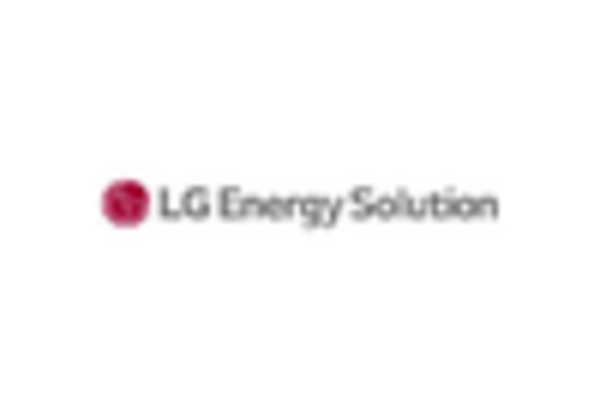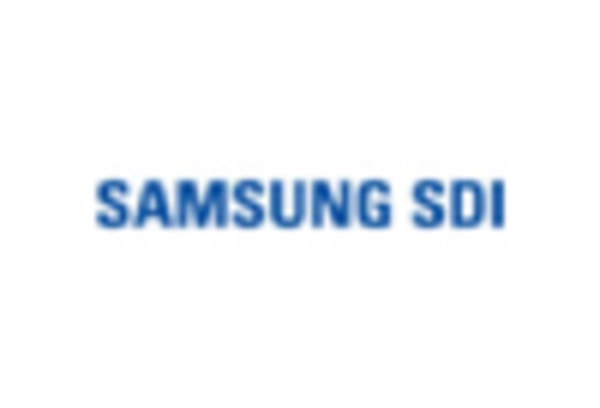Growing Focus on Sustainability
The increasing emphasis on sustainability is reshaping the Automotive Li Ion Battery Market. Consumers and manufacturers alike are prioritizing eco-friendly practices, including the sourcing of raw materials and the recycling of batteries. As of 2025, the market is witnessing a surge in initiatives aimed at developing sustainable battery technologies, such as the use of recycled materials in battery production. This focus on sustainability not only addresses environmental concerns but also enhances the brand image of automotive companies. Consequently, the Automotive Li Ion Battery Market is likely to benefit from this shift towards greener practices, attracting environmentally conscious consumers.
Advancements in Battery Technology
Technological innovations in battery chemistry and design are transforming the Automotive Li Ion Battery Market. Recent developments, such as solid-state batteries and improved energy density, are enhancing the performance and safety of lithium-ion batteries. For instance, advancements in battery management systems are optimizing charging cycles and extending battery life. As of 2025, the market is projected to grow at a compound annual growth rate (CAGR) of approximately 20%, driven by these technological enhancements. This evolution not only improves the efficiency of electric vehicles but also attracts investments in research and development, further stimulating the Automotive Li Ion Battery Market.
Expansion of Charging Infrastructure
The expansion of charging infrastructure is a crucial driver for the Automotive Li Ion Battery Market. As the number of electric vehicles on the road increases, the need for accessible and efficient charging solutions becomes paramount. Investments in charging networks are expected to rise, with projections indicating a growth in charging stations by over 50% by 2025. This development alleviates range anxiety among consumers, encouraging more individuals to consider electric vehicles. The enhanced charging infrastructure not only supports the growth of the Automotive Li Ion Battery Market but also fosters a more robust ecosystem for electric mobility.
Government Regulations and Incentives
Government policies aimed at promoting clean energy and reducing greenhouse gas emissions are significantly influencing the Automotive Li Ion Battery Market. Various countries have implemented stringent regulations that encourage the adoption of electric vehicles, thereby increasing the demand for lithium-ion batteries. For example, tax incentives and subsidies for EV buyers are becoming commonplace, which is likely to drive sales. In 2025, it is anticipated that regulatory frameworks will continue to evolve, further supporting the growth of the Automotive Li Ion Battery Market. This regulatory environment creates a favorable landscape for manufacturers to innovate and expand their production capabilities.
Increasing Demand for Electric Vehicles
The rising demand for electric vehicles (EVs) is a primary driver of the Automotive Li Ion Battery Market. As consumers become more environmentally conscious, the shift towards EVs is accelerating. In 2025, it is estimated that the sales of electric vehicles will surpass 10 million units, significantly boosting the need for high-performance lithium-ion batteries. This trend is further supported by government incentives and regulations aimed at reducing carbon emissions. Consequently, manufacturers are compelled to enhance battery technology to meet the growing demand, thereby propelling the Automotive Li Ion Battery Market forward.


















Leave a Comment